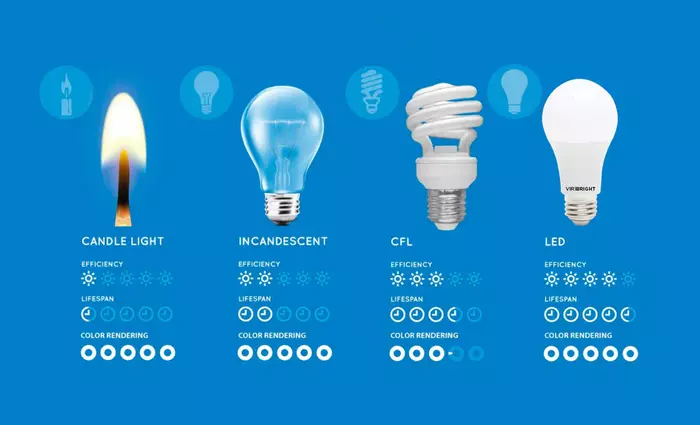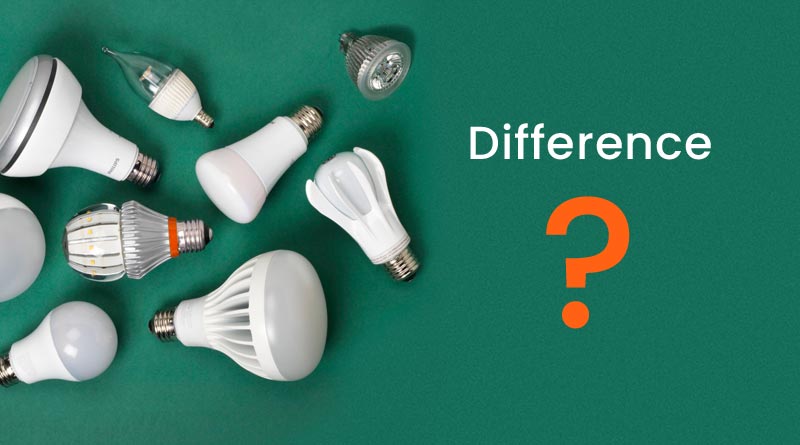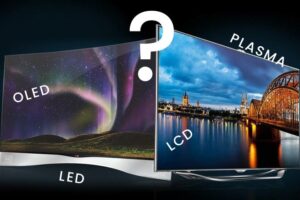Welcome to the enlightening world of lighting technologies, where the choices between incandescent, CFL, and LED bulbs can significantly impact your living space. As we explore these illuminating options, we’ll unravel the distinctive features that set them apart. Lighting isn’t just about brightness; it’s about efficiency, lifespan, and environmental impact. In this journey, we’ll navigate the terrain of traditional incandescents, the efficient Compact Fluorescent Lamps (CFL), and the cutting-edge Light-emitting diode (LED) bulbs. Understanding these choices empowers you to make informed decisions, transforming your space into a well-lit haven that aligns with both your aesthetic preferences and practical needs. So, let’s shed light on the intricacies of these bulbs, guiding you toward a brighter and more energy-efficient future.
Incandescent Bulbs

Incandescent bulbs, the warm and familiar bulbs we’ve all known for years, use a simple but inefficient method to create light. They work by heating a filament with electricity, making it glow. While they cast a pleasant, warm light, they waste a lot of energy and only last around 1,000 hours. Thankfully, technological advancements have brought us more efficient and long-lasting options like CFL and LED bulbs. So, while incandescent bulbs may hold a special place in our nostalgia, they’re becoming outdated when it comes to energy-saving technology.
CFL (Compact Fluorescent Lamp) Bulbs
“Compact Fluorescent Lamp (CFL) bulbs are a step forward in lighting technology,” explained Dr. Mark Robinson, an energy efficiency expert at BrightFuture Lighting. “They work by passing electricity through a gas, creating ultraviolet light that stimulates phosphors, producing visible light. CFLs are more energy-efficient than incandescent bulbs, helping reduce electricity bills. They last longer, approximately 8,000 hours, making them a cost-effective choice in the long run. However, it’s important to note that CFLs contain a small amount of mercury, which requires proper disposal to prevent environmental impact. Despite this concern, CFL bulbs strike a balance between energy efficiency and affordability, offering a more modern alternative to incandescent.”
LED (Light Emitting Diode) Bulbs

Move over, old-fashioned incandescents! LED bulbs are the shining stars of the lighting world. Here’s why:
- Energy Champions: LEDs are like super-efficient light machines. They use way less energy than incandescents, which means big savings on your electricity bill.
- Long-Lasting Lumens: Forget constantly replacing bulbs! An LED bulb can light your way for a whopping 25,000 to 50,000 hours – that’s compared to a mere 1,000 hours for an incandescent.
- Cool Customers: Unlike their hot-headed incandescent cousins, LEDs stay cool, reducing your air conditioning bills and fire risk.
- A Rainbow of Choice: Want to create a mood? LEDs come in a wide variety of colors, letting you customize your lighting to match any occasion.
- Eco Champs: LEDs are kind to the planet. They contain no harmful materials and use less energy, making them a great choice for a greener future.
Comparing Incandescent, CFL, and LED Bulbs
| Consideration | Incandescent Bulbs | CFL Bulbs | LED Bulbs |
|---|---|---|---|
| Energy Efficiency | Less efficient, producing more heat. | More efficient than incandescents but less than LEDs. | Highly efficient, minimal heat production. |
| Lifespan | Shorter lifespan, around 1,000 hours. | Longer lifespan, about 8,000 hours. | Longest lifespan, 25,000 to 50,000 hours. |
| Environmental Impact | Contains no hazardous materials. | Contains a bit of mercury, requires proper disposal. | Environmentally friendly, no hazardous materials. |
| Cost | Economical upfront but higher operational costs. | Affordable upfront with moderate operational costs. | Higher upfront cost but significantly lower operational costs. |
| Light Quality | Warm and traditional. | Initially cooler, but modern versions offer warmer tones. | Highly versatile, offering various colors and tones. |
Incandescent bulbs, while budget-friendly, are inefficient and have a short lifespan. CFL bulbs offer better energy efficiency but come with a disposal concern due to mercury. LED bulbs, despite a higher initial cost, excel in energy efficiency, longevity, and environmental friendliness.
Considering factors such as cost, energy efficiency, and environmental impact, LED bulbs emerge as the top choice. Balancing longevity, efficiency, and eco-friendliness, LEDs illuminate the path to a brighter and more sustainable future, outshining both incandescents and CFLs. For more such posts please visit our Technology section.




